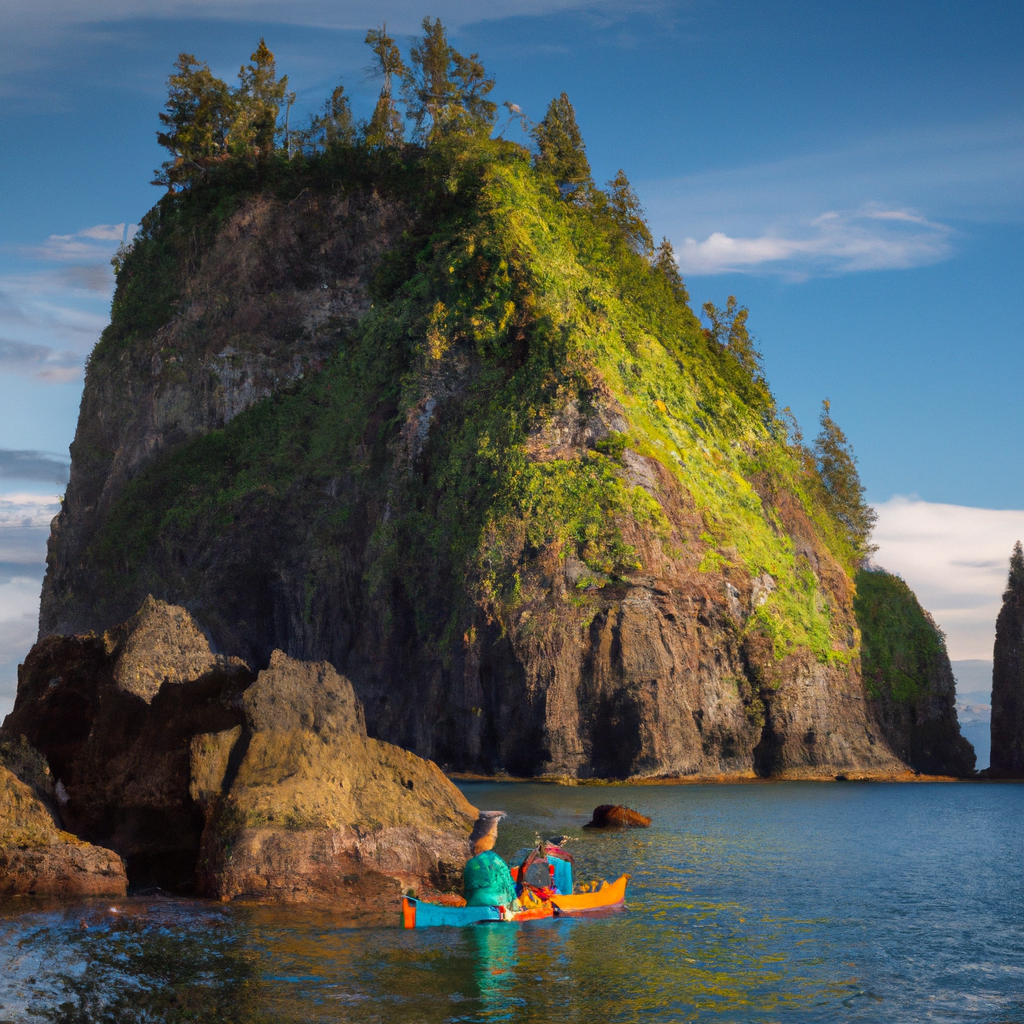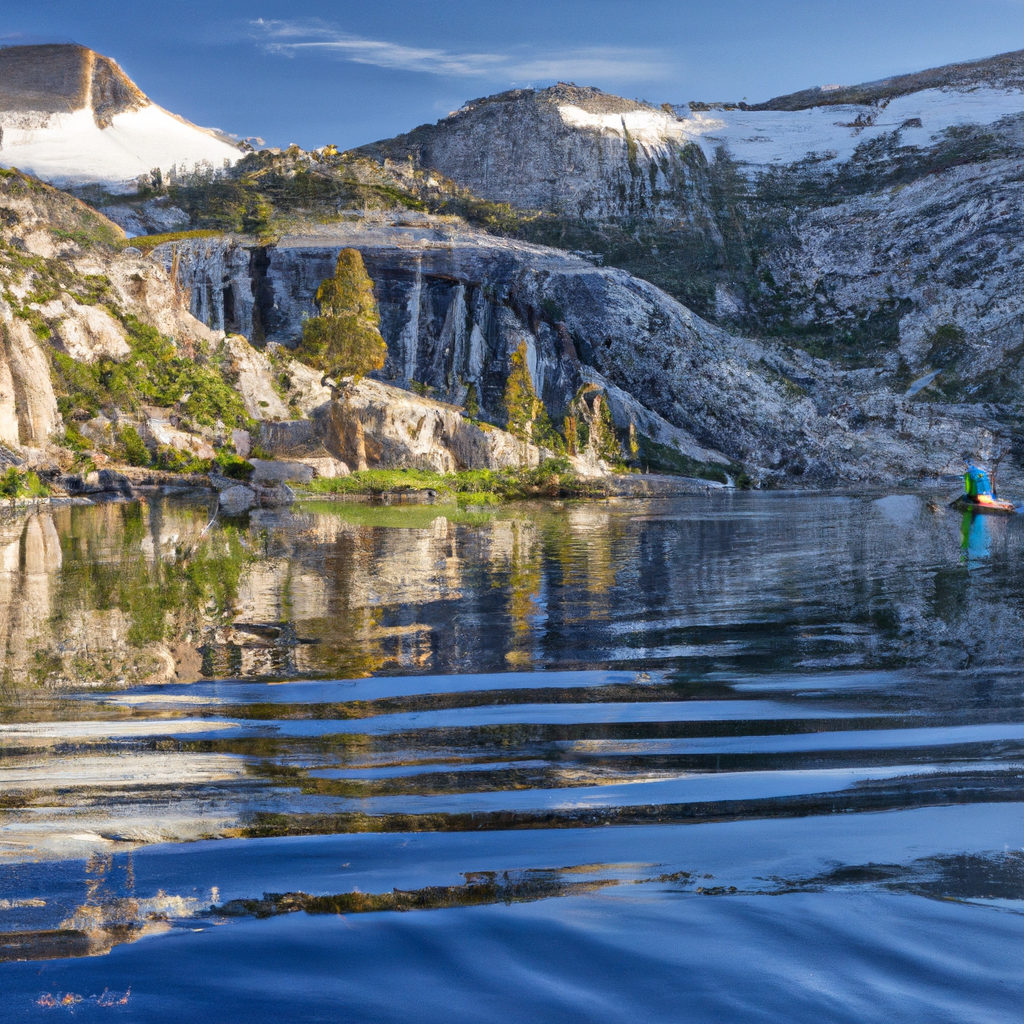Imagine stepping out of your daily routine and entering a world of thrilling experiences and breathtaking landscapes. This is what “Outdoor Adventures” is all about. In this article, we will explore the wonders of outdoor activities and the joy they bring to your life. From hiking through lush forests to conquering challenging peaks, get ready to embark on a journey that will leave you energized, rejuvenated, and with memories to last a lifetime. So, dust off your hiking boots and get ready for an adventure like no other. Let’s dive into the world of “Outdoor Adventures.”

Hiking
Hiking is a fantastic way to explore the great outdoors and connect with nature. From breathtaking mountain ranges to scenic coastal trails, the world offers a vast array of hiking opportunities. Whether you’re a beginner or an experienced hiker, there is a trail out there for you. Let’s dive into some of the best hiking trails in the world.
Best Hiking Trails in the World
- Inca Trail, Peru: Trek through the ancient ruins of Machu Picchu on the Inca Trail. This four-day adventure offers stunning views of the Andes Mountains and takes you through lush cloud forests.
- Appalachian Trail, United States: Spanning over 2,100 miles, the Appalachian Trail stretches from Georgia to Maine. Experience diverse landscapes and visit picturesque towns along this iconic trail.
- Tour du Mont Blanc, France, Italy, Switzerland: Take on an incredible journey as you circle the Mont Blanc massif. This 110-mile trail offers breathtaking alpine scenery and charming mountain huts.
- The Overland Track, Australia: Explore Tasmania’s wilderness on the Overland Track. This six-day trek takes you through ancient rainforests, across alpine plateaus, and to the summit of Cradle Mountain.
Now that you know about some of the best hiking trails, it’s essential to have the right gear for a safe and enjoyable experience.
Essential Hiking Gear
- Hiking Boots: Invest in a good pair of hiking boots that provide ankle support and have a sturdy sole for traction on various terrains.
- Backpack: Choose a backpack that fits comfortably and has enough room to carry your essentials, including water, snacks, a first-aid kit, and navigation tools.
- Clothing: Dress in layers to adjust to changing weather conditions. Opt for moisture-wicking and quick-drying fabrics to stay comfortable on the trail.
- Navigation Tools: Carry a map, a compass, and a GPS device to help you navigate the trail effectively. It’s also a good idea to have a backup battery or a portable charger for your electronic devices.
- Safety Equipment: Pack a whistle, a headlamp, and a multi-tool in case of emergencies. Additionally, consider carrying a lightweight tent and a sleeping bag for overnight hikes.
Now that you’re fully equipped, let’s discuss some tips for a safe hiking experience.
Tips for a Safe Hiking Experience
- Research and Plan: Familiarize yourself with the trail before you embark on your hike. Check the weather conditions, trail difficulty, and any permits or restrictions required.
- Stay Hydrated and Fuel Your Body: Drink plenty of water throughout your hike to stay hydrated. Pack energizing snacks such as nuts, dried fruit, and energy bars to keep your energy levels up.
- Dress Appropriately: Wear appropriate clothing and footwear for the weather conditions and terrain. Don’t forget to apply sunscreen and wear a hat to protect yourself from the sun’s rays.
- Pace Yourself: Start with a comfortable pace and take regular breaks to rest and refuel. Pushing yourself too hard can lead to fatigue and injuries.
- Leave No Trace: Respect the environment by following the principles of Leave No Trace. Pack out all trash, stay on designated trails, and minimize your impact on wildlife and vegetation.
Remember, hiking should be enjoyable, so take your time to appreciate the beauty around you and create lasting memories.
Camping
Camping is a wonderful way to immerse yourself in nature and escape the hustle and bustle of everyday life. Whether you prefer pitching a tent in a remote wilderness or camping at a designated campsite with facilities, there are various camping options to suit your preferences. Let’s explore different types of camping and the must-have equipment for your camping adventures.
Types of Camping
- Tent Camping: The most traditional form of camping, tent camping involves setting up a tent at a campsite. It offers a closer connection to nature and lets you experience the tranquility of sleeping under the stars.
- RV Camping: If you prefer a bit more comfort and convenience, RV camping might be for you. Traveling in a recreational vehicle allows you to bring along amenities such as a kitchen, bathroom, and sleeping quarters.
- Backpacking: For those seeking more adventurous and remote camping experiences, backpacking offers the chance to carry everything you need on your back and hike to more secluded campsites.
Now that you’ve decided on the type of camping that suits your style, it’s time to gather the essential camping equipment.
Must-Have Camping Equipment
- Tent: Choose a tent appropriate for the number of people camping and the weather conditions. Look for a tent that is easy to set up and provides sufficient protection from the elements.
- Sleeping Bag and Sleeping Pad: Invest in a high-quality sleeping bag that suits the expected temperatures. A sleeping pad adds an extra layer of comfort and insulation between you and the ground.
- Cooking Equipment: Depending on your camping style, pack a stove, cookware, utensils, and food storage containers. Don’t forget to bring a cooler for perishable items.
- Lighting: Bring a headlamp or flashlight for navigating the campsite at night. Additionally, consider hanging string lights around your campsite to create a cozy atmosphere.
- Camp Chairs and Tables: Relax around the campfire with comfortable camp chairs and use a sturdy camping table for meal preparation and storage.
Now that you’re equipped with the necessary gear, let’s delve into some cooking tips for your camping adventures.
Cooking Tips for Camping
- Meal Planning: Plan your meals in advance to ensure you have all the necessary ingredients. Pre-cut and pre-measure ingredients at home to minimize preparation time at the campsite.
- Pack Non-Perishable Items: Opt for non-perishable food items such as canned goods, dried pasta, and dehydrated meals. These items are lightweight, easy to transport, and have a longer shelf life.
- Use Campfire Cooking Techniques: Embrace the classic campfire cooking experience by roasting hot dogs on sticks, cooking foil-wrapped meals, or using a cast-iron skillet for delicious one-pot meals.
- Bring Portable Cooking Tools: Consider investing in portable grills, stoves, and cooking accessories that are specifically designed for camping. These tools are compact, lightweight, and easy to clean.
- Practice Proper Food Storage: Store your food securely in airtight containers or coolers to prevent animals from accessing it. Keep perishable items in a well-insulated cooler with sufficient ice or ice packs.
Remember to always follow safety precautions when cooking with open flames and be mindful of any fire restrictions in your camping area.
Camping offers a unique opportunity to unwind, bond with loved ones, and appreciate the beauty of nature. So grab your gear, set up your campsite, and make memories that will last a lifetime.
Rock Climbing
Rock climbing is a thrilling outdoor sport that challenges both the mind and body. With its combination of physical strength, mental focus, and strategic planning, rock climbing offers a unique and rewarding experience. Whether you’re a beginner looking to try indoor climbing or an experienced climber seeking new challenges outdoors, there is a world of possibilities to explore. Let’s dive into popular rock climbing destinations, safety measures and equipment, as well as training and preparation tips.
Popular Rock Climbing Destinations
- Yosemite National Park, United States: Known for its granite cliffs and iconic rock formations, Yosemite offers a range of climbing routes for all skill levels. El Capitan and Half Dome are among the park’s most renowned challenges.
- Kalymnos, Greece: With its scenic beauty and reliable climbing weather, Kalymnos has become a rock climbing paradise. The island offers a variety of limestone cliffs, from beginner-friendly routes to challenging overhangs.
- Joshua Tree National Park, United States: Located in California’s Mojave Desert, Joshua Tree is a haven for rock climbers. Its unique granite formations provide an abundance of crack climbing routes and boulder problems.
- Krabi, Thailand: Known for its stunning limestone cliffs rising from turquoise waters, Krabi offers world-class rock climbing opportunities. Railay Beach is a popular destination with routes catering to beginners and advanced climbers.
Once you’ve chosen your destination, it’s crucial to prioritize safety by using the right gear and following established safety measures.
Safety Measures and Equipment
- Climbing Helmet: Protect your head from falling rocks and potential impacts by wearing a climbing helmet. Choose a helmet that fits well and has proper ventilation for comfort.
- Harness and Climbing Shoes: Invest in a comfortable harness that fits snugly around your waist and thighs. Climbing shoes should provide a tight and precise fit to assist with footholds.
- Rope and Quickdraws: Use dynamic ropes designed for climbing, which can stretch to absorb the shock of a fall. Quickdraws are used to secure ropes to bolts or other fixed anchors.
- Belay Device: A belay device allows you to control the rope while your partner climbs. Choose a device that suits your preferred belaying technique, such as assisted braking devices or tube-style devices.
- Carabiners and Slings: Carabiners are used to connect climbing equipment, while slings provide versatility for extending anchors or constructing belays.
Now that you have the necessary gear, let’s explore some training and preparation tips to enhance your rock climbing skills.
Training and Preparation Tips
- Build Strength and Endurance: Engage in exercises that target your upper body, core, and grip strength. Incorporate activities like pull-ups, push-ups, and hangboard training into your routine.
- Learn Proper Techniques: Take climbing lessons or hire a professional guide to learn essential techniques such as footwork, body positioning, and efficient movement.
- Practice Climbing Indoors: Visit an indoor climbing gym to practice climbing techniques and build strength in a controlled environment. Indoor climbing also helps you refine your skills before tackling outdoor routes.
- Increase Flexibility: Regular stretching and yoga sessions can enhance your climbing performance by improving flexibility and preventing injuries.
- Mental and Technical Preparation: Develop problem-solving skills and learn how to read climbing routes effectively. Familiarize yourself with climbing knots and rope management techniques.
Remember, rock climbing can be physically demanding and mentally challenging. Make safety a priority, focus on proper technique, and constantly push your limits within your ability.
Rock climbing is an adventure that offers a unique perspective and thrilling challenges. So strap on your harness, tie your knot, and reach for new heights in the world of rock climbing.
Water Sports
If you love the water and seek adventure and thrill, water sports provide the perfect opportunity to create unforgettable memories. From gliding through the calm waters of a serene lake to conquering massive ocean waves, there is a water sport for everyone. Let’s dive into kayaking and canoeing, surfing and bodyboarding, as well as sailing and windsurfing.
Kayaking and Canoeing
Kayaking and canoeing offer serene and controlled experiences on the water, allowing you to explore waterways and enjoy peaceful surroundings. Whether you prefer the stability of a canoe or the maneuverability of a kayak, these water sports provide a unique way to connect with nature and discover hidden gems.


